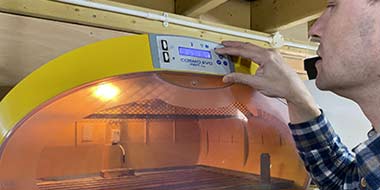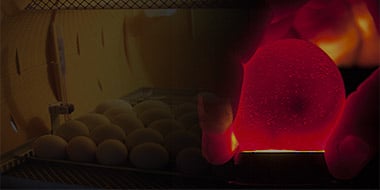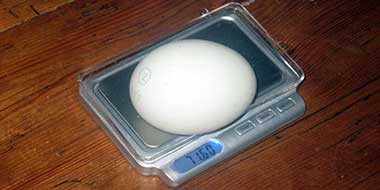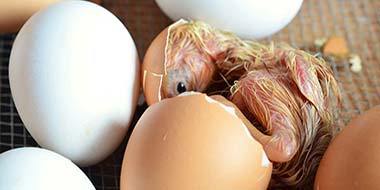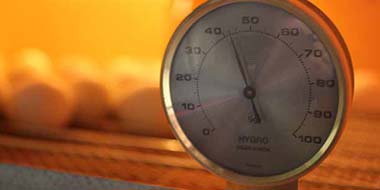
When things don’t go quite according to plan (which can and does happen when incubating poultry artificially), try using this incubation troubleshooting guide to work out what went wrong. If you can find the problem, you’re already halfway to fixing it!
This guide is a general guide and covers all poultry, although I use chicks/chickens as an example.
Incubation requires the right temperature, humidity, ventilation to provide fresh air to the eggs and egg-turning to stop embryos from sticking to the shells.
The following articles might help you in conjunction with this troubleshooting guide:
- Incubation humidity – A lot of problems are caused by the humidity being too high. This in-depth guide shows you how to measure the relative humidity in your incubator accurately.
- Weight loss method of incubation – If you have eggs that are difficult to hatch or struggle with the correct humidity, the weight loss method is far more accurate.
- Candling eggs – Candling is an essential process during incubation. This guide helps you learn what to look for when you’re working out what went wrong.
Inspecting your eggs
Air sac size and contents of the egg
Although it can be a smelly job, it is advisable to crack open eggs to get a better look, but before you do, check the size of the air sac.
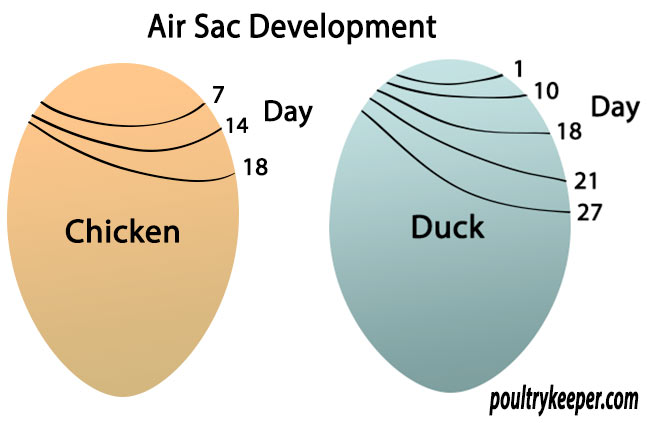
The air sac’s size is an excellent indication of how much weight the egg has lost during incubation. It can tell you whether the humidity has been too high or too low. The image shows you the expected size of the air sac at different incubation times.
If the humidity is too high, there isn’t enough moisture lost from the egg, and the air sac is too small. Conversely, if the humidity is too low, there is too much weight loss, and the air sac is too large.
Once you know how big the air sac was and have carefully opened the shell, use the incubation troubleshooting guide to see whether you can get some ideas of what went wrong.
Incubation troubleshooting guide
| Problem | Possible Cause(s) | Remedies |
| Eggs clear. No growth or blood in egg or small growth/blood when opened. | Male sterile or not mating. |
|
| Unsuccessful mating |
| |
| Poor nutrition or inadequate water. |
| |
| Birds overcrowded. |
| |
| Eggs stored for too long or stored at the incorrect temperature. |
| |
| Eggs are shaken or dropped – such as going through the postal system. |
| |
| The temperature of the incubator is too high or low |
| |
| Hereditary poor hatchability. |
| |
| Flock in poor condition / incorrect feeding. |
| |
| Eggs chilled or overheated before collection. |
| |
| Chicks died before fully developing | Ventilation inadequate. |
|
| The temperature of the incubator is too high or low. |
| |
| Incorrect or inadequate turning. |
|

| Chicks fully formed but dead in shell, no pipping. On opening eggs, sometimes unabsorbed yolk can be seen. | Disease or flock in poor condition. |
|
| Eggs chilled or overheated before collection. |
| |
| Low average humidity over the incubation cycle. |
| |
| The temperature of the incubator is too high or low. |
| |
| Incorrect or inadequate turning. |
|

| Chicks fully formed but dead in shell, chicks breakthrough air sac and sometimes pip the shell but don’t make it out. | High average humidity over the incubation cycle. Eggs haven’t lost enough weight, the air sac is too small, and the chicks are too large for the available space. Chick unable to move into the hatching position, or, if it does, the membrane is too rubbery to breakthrough. If it breaks through to the air sac, it will not have enough oxygen and suffocate. Chicks that hatch will be larger than average. |
|
| Low average temperature. |
| |
| Ventilation inadequate. |
| |
| Temperature too high for a short period of time. |
|

